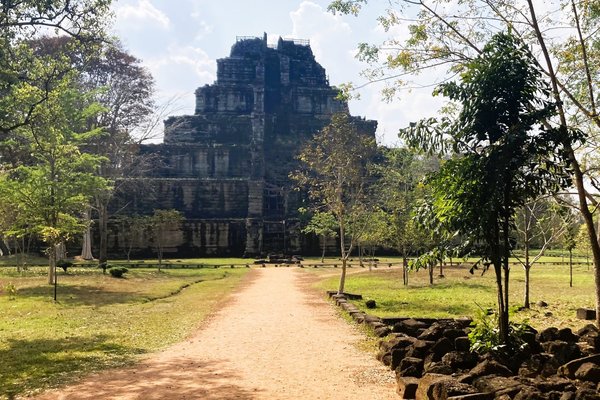Cambodia
Koh Ker
Koh Ker: Archaeological Site of Ancient Lingapura or Chok Gargyar comprises the remains of an early and short-lived capital of the Khmer Empire.
Koh Ker influenced later Khmer architecture with its stone constructions and spatial layout. It also produced the distinct Koh Ker Style in sculpture, which is characterized by the monumental size and dynamics of the sculptures. They had a lasting influence on decorative styles in South East Asia.
Community Perspective: It's a day trip from Siem Reap, and can be combined with Preah Vihear on the same itinerary (although this shortchanges Koh Ker a bit if you leave it til the end). The archeological site, best known for its layered pyramid, is rather spread out and you need a car. Frederik spent a full day here and provided details on its architecture.
Site Info
Official Information
- Full Name
- Koh Ker: Archaeological Site of Ancient Lingapura or Chok Gargyar (ID: 1667)
- Country
- Cambodia
- Status
-
Inscribed 2023
Site history
History of Koh Ker
- 2023: Inscribed
- Inscribed
- 2020: Revision
- Renomination of Le site de Koh Ker (1992)
- Type
- Cultural
- Criteria
- ii
- iv
Links
- UNESCO
- whc.unesco.org
All Links
UNESCO.org
- whc.unesco.org — whc.unesco.org/
Community Information
- Community Category
- Archaeological site: South (East) Asian
Travel Information
Siem Reap Hotspot
Recent Connections
-
Mandala
"The layout of the city is presented in…
-
Writing systems
"In nine of 76 temples in Koh Ker, 73 i…
-
Vishnu cult
"Dedicated to Lord Vishnu, Prasat Chen …
Connections of Koh Ker
- Individual People
- History
-
-
Fusion
Criterion ii: "The archaeological site of Koh Ker exhibits in an exceptional way the interchange of human values that resulted in the Koh Ker Style, a sculptural expression featuring bold, expressive imagery and a dynamic sense of movement that resulted from the fusion of Indian religious and artistic symbolism with local design concepts and artistic craftsmanship." (OUV) – "ICOMOS considers (...) that the Koh Ker Style is the product of the fusion of Indian religious symbolism with Indigenous cultural values and traditions." (Ab Ev)
-
Khmer Empire
"It had inaugurated a centuries-long phase of stone temple construction across the Khmer Empire" (AB ev) -
Located in a Former Capital
"Koh Ker was a capital of the Khmer Empire between 921 and 944 CE" (AB ev)
-
- Architecture
-
-
Mandala
"The layout of the city is presented in the nomination dossier as being based on the shape of the sacred Padmaka or Shiva Shakti mandala (...) The marker temples are those that seem to be directly aligned with the Prasat Thom to form the geometric shape of the sacred mandala." (AB Ev) – "The urban ensemble and its components are characterised by their scale and their innovative integration into natural topography using a sacred symbolic mandala plan." (Nomination file, p. vii)
-
Brick architecture
"Prasat Ruom is a square terrace of twenty-one brick towers" (AB ev) – "Amongst monuments currently listed within the Nominated Property, 6 are built in sandstone, 22 in brick and 23 in laterite." – "Brick was the most common material used for smaller temples, except Prasat Kraham." (Nomination file, p. 39, 44)
-
Geomancy
"The layout of the city is presented in the nomination dossier as being based on the shape of the sacred Padmaka or Shiva Shakti mandala, a concept of city plans from the Vastu Shastra, a collection of treatises of ancient Hindu architecture and town planning, though there are no known contemporary records or inscriptions to confirm the original planning methodology." (AB Ev) – "Koh Ker was conceived and developed in a single phase under the grand vision of Jayavarman IV. It is clear that his city plan was inspired from the concept of city plans of Vastu Shastra, a treatise of ancient Indian Hindu architecture and town planning." (Nomination file, p. 30)
-
Built in Laterite
"Dedicated to Lord Vishnu, Prasat Chen comprises three laterite sanctuaries that are square in plan and face east." – "There are fourteen laterite platforms, which are thought to be the foundations for wooden sanctuaries." (AB Ev) – "(...) in Koh Ker, laterite blocks were also used for as primary material for temple construction" – "Amongst monuments currently listed within the Nominated Property, 6 are built in sandstone, 22 in brick and 23 in laterite." – "Laterite is the second largest material being utilised for temple construction, as well as for foundations and embankments of the dyke, reservoir and the Rahal." (Nomination file, p. 38, 39, 74)
-
Spolia
"Prasat Sralau (...) from the 13th century C.E. is included [in the main central temple complex of Prasat Thom] as it replaced an existing temple on the site which functioned as the linga temple no. 5, and is made reusing the stones from that temple." (Nomination file, p. 45)
-
- Damaged
-
-
Damaged in War since WWII
"Some sculptures were looted in the past, particularly during the civil war period between 1967 and 1975." (AB Ev)
-
- World Heritage Process
-
-
Perfect Inscriptions
2023
-
- Religion and Belief
-
-
Legends and Folk Myths
Prasat Neang Khmau: "(...) many years ago a powerful king Preah Bat Sorya Teyong lived at the Chiso mountain. One day his daughter Neang Khmao, went to Tonle Protron and met a handsome man, Bandit Srey, who instantly fell in love with her and who used magic to make her fall in love with him. When the king heard about this he ordered his daughter be exiled and he built two temples for her to live in. Whilst in exile she fell in love with a monk who subsequently fell in love with her and gave up being a monk to live with the princess in the temple since which it has been known as Neang Khmao Temple." (Wikipedia)
-
Hindu Sites in non Hindu countries
"With Prasat Thom dedicated to Shiva, Prasat Chen dedicated to Vishnu and Prasat Banteay Pir Choan dedicated to Brahma, the symbolic Hindu Trinity lies on a triangular formation and was positioned as an attempt to assert divinity to the kingship by Jayavarman IV." (Nomination file, p. 36)
-
Shiva cult
"Prasat Prang is a thirty-eight-metre-high stepped pyramid constructed as the Koh Ker version of Mount Meru and Kailash, the earthly abode of Lord Shiva." – Criterion iv "is justified by the State Party on the grounds that Koh Ker is an outstanding example of an urban ensemble of a preconceived layout of the sacred symbolic mandala representing the Shiva cult (...)." (AB Ev) – "The capital of Koh Ker, when established, was unparalleled in the entire Southeast Asia, as also its pyramidal temple, as a regional centre of Shiva Worship." – Jayavarman IV's "bid to establish Koh Ker as the centre of Shiva devotion and the Hindu cosmos is manifested in the distinct sacred urban design, monumental structures and infrastructure". (Nomination file, p. vii) – "(...) the city was also not explicitly named after [Jayavarman IV] but was rather called 'Lingapura, the city of Lingas, the abode of Shiva'." (Nomination file, p. 87)
-
Vishnu cult
"Dedicated to Lord Vishnu, Prasat Chen comprises three laterite sanctuaries that are square in plan and face east. Prasat Banteay Pir Choan, Prasat Chen, and Prasat Thom together represent the Hindu Trimurti (Brahma, Vishnu, and Shiva)." (AB Ev) – "Prasat Chen (...) was built by Jayavarman IV between 921-928 C.E. and is dedicated to Lord Vishnu." (Nomination file, p. 54)
-
- Human Activity
-
-
Writing systems
"In nine of 76 temples in Koh Ker, 73 inscriptions have been found. Notably, these inscriptions are scripted on the walls, columns, and doorframes of temples in old Khmer and Sanskrit. This is highly unusual considering that until that time most royal inscriptions were only in the official Sanskrit language, itself considered sacred in Indian tradition. Another distinctive aspect of inscriptions of Koh Ker was that they were written in a large script compared to other Khmer inscriptions in pre-Angkor and Angkor periods." (Nomination file, p. 67)
-
Multilingual inscriptions
"In nine of 76 temples in Koh Ker, 73 inscriptions have been found. Notably, these inscriptions are scripted on the walls, columns, and doorframes of temples in old Khmer and Sanskrit. This is highly unusual considering that until that time most royal inscriptions were only in the official Sanskrit language, itself considered sacred in Indian tradition." - "Jayavarman IV (...) broke from tradition and made old Khmer in inscriptions together with Sanskrit." (Nomination file, p. 67, 108)
-
Protective engineering works against flooding
"Dykes are located primarily at the high contours of the surrounding hills. They were built to prevent the city from flooding (...)." – "Embankments are essential during the wet season to prevent the city from flooding, and to collect water for living during the dry season." – "(...) a sophisticated hydraulic system was constructed to transform the often-flooded area into habitable land." (AB Ev)
-
Irrigation and drainage
"The water management system at Koh Ker is a combination of a highland system of damming river valleys and a lowland system of reservoirs, channels, and bunded fields. This amalgamation of techniques is unique to the Khmer history. The hydraulic structures of this water management system can be classified into two broad categories: artificial ponds, and embankments." (AB Ev), "Dykes are located primarily at the high contours of the surrounding hills. They were built to prevent the city from flooding, and at the same time to guide water flow to feed city ponds and reservoirs."
-
Festivals
"In accordance with Cambodian tradition, ancient temples are given the names of individual Neak Ta (powerful ancestral spirits). The residents of settlements near Koh Ker have a significant Neak Ta Moeung the main spirit that protects the village, its wooden shrine is located in the north-west corner of Prasat Thom, and is worshipped in an annual festival. Both these celebrations known as "Leung Memot" in Khmer are held in February or March, in accordance with the Khmer Lunar calendar (Phin 2011)." (Nomination file, p. 29)
-
Stone Quarries
"Three sandstone quarries have been found from where the grey to yellowish-brown sandstone blocks used in Koh Ker's monuments likely originate." (AB Ev)
-
Slavery
The inscriptions at Koh Ker "record the donations of the king and dignitaries, the erection of the temples for the gods, lists of slaves and the names of the Srok or districts. The inscriptions also mentioned people arriving from remote areas to work in the new capital, as well as lists of royalty and slaves by village of origin." (Nomination file, p. 67)
-
- Constructions
-
-
Passage of the Sun
"The main axis of Prasat Thom and several other associated temples is quite precisely oriented to the rising sun on the day of Khmer New Year, which for Koh Ker falls on 13th April, the only fixed date in the Khmer lunar calendar. His explicit connection of the axis of the entire city along with its state temple with the rising sun on the days of its zenith passage is indeed a remarkable planning and design feature of Koh Ker." (Nomination file, p. 105)
-
Moats
"In Hindu mythology, (...) the highest mountain is called Meru, located at the centre of the universe, which is surrounded by the Sea of Milk, from which ambrosia was churned. In Indian temple tradition, the spires represented Mount Meru, and the associated water tank or river represented the sea. However, in Cambodia, the cosmological conception of the sea of milk around Meru is represented by a moat, like at Prasat Thom in Koh Ker." (Nomination file, p. 39) – Prasat Ruom, part of the Prasat Thom complex, is "surrounded by a large moat". (Nomination file, p. 51)
-
Protective Shelters
"The wall paintings of Prasat Thom and the fragments of paintings were housed in a protective shelter under a temporary shed of thatch in Prasat Thom, to prevent any water ingress during rains (...)." (Nomination file, p. 173)
-
Pyramids
"Prasat Prang is a thirty-eight-metre-high stepped pyramid" (AB ev)
-
- Timeline
-
-
Built in the 10th century
"Koh Ker was a capital of the Khmer Empire between 921 and 944 CE" (AB ev)
-
- WHS Hotspots
-
-
Siem Reap Hotspot
Can be done on a combined day trip with Preah Vihear from Siem Reap. Distance to Koh Ker is 114km.
-
- Science and Technology
-
-
Uncovered using Lidar
"The LiDAR survey revealed a complete spatial layout of the site, forming a rectangular formation linking the main features within the complex, including the Rahal, embankments and temples, and with Prasat Thom located at its precise centre." – "The above ground remains have been listed and identified in the site surveys, while buried remains have been identified through surveys, excavations, Ground Penetrating Radar (GPR) and LiDAR." – "Some underground elements have been discovered through LiDAR survey, contributing towards a better understanding of the site's overall water system." (Nomination file, p. 32, 69, 164)
-
Libraries
"Prasat Ruom is a square terrace of twenty-one brick towers and two libraries with rich statues and a strip of wall painting, surrounded by a large moat and accessed by causeways along the central axis." (AB Ev) – Prasat Thom has "21 towers and 2 libraries for scriptures". (Nomination file, p. 46)
-
Recorded cultural discoveries
"Koh Ker was rediscovered in 1873 by French researcher Louis Delaporte." (AB Ev) – "Knowledge of the existence of Koh Ker (...) came to light in the late 19th century C.E. French adventurers ranging the forests around the site of Koh Ker while hunting game brought word of the structures in the area back to France. Louis Delaporte was the first researcher of the modern era to visit Koh Ker in 1873." (Nomination file, p. 95)
-
Astronomy and Astrology
"The orientation of the temple of Prasat Thom does not follow the classical orientation of Khmer temples, but is tilted 13° 77' to the northeast. Considering the importance of Prasat Thom as the state temple of Koh Ker, its orientation contributes to the symbolic, functional, religious and astronomical aspects of city planning. This sacred geometry is also remarkable for its elegance and precision and for its alignment with the solstices and other important naturalistic calendars. This orientation on latitude 13° 44' allows a zenith passage by the Sun on 13th April, is celebrated as the Khmer New Year (Gupta 2020). This integration of the astronomical phenomena with sacred geography reflected in the city planning was the first in Khmer history." (Nomination file, p. 34)
-
Archaeological potential
"a largely unexcavated archaeological site" (Nomination file, p. viii) – "Recent LiDAR surveys conducted in 2012 have additionally uncovered many more areas of potential archaeology and structures, most of which are in their original form, location and setting. It also suggests that the site has a much larger extent than was previously believed." (Nomination file, p. 96)
-
- Visiting conditions
-
-
Archaeological Site Reburial
"Archaeological remains have been inventoried and documented, and the excavated sites have been backfilled to protect the historic fabric from further damage." (AB Ev)
-
News
No news.
Recent Visitors
Visitors of Koh Ker
- Alejandro Lau
- Alexander Lehmann
- Alex Marcean
- AlexSchedel
- Atila Ege
- basementonline
- Bernard Joseph Esposo Guerrero
- Bill Maurmann
- Bin
- Brendan Carroll
- Can SARICA
- Chalamphol Therakul
- Christravelblog
- Cluckily
- ctravel
- CugelVance
- cutecid
- David Aaronson
- DL
- dmscanlan
- Elisabeth Fransisca Situmorang
- Els Slots
- Errol Neo
- Fan Yibo
- Feldhase
- Fmaiolo@yahoo.com
- Frederik Dawson
- GabLabCebu
- Geert Luiken
- Ivan Rucek
- ivantham
- Jackson
- JL
- jonathanfr
- Justin Rickey
- Kbecq
- KeithBailey
- Kjlauer
- Kurt Lauer
- La Concy
- Luis Filipe Gaspar
- Lukasz Palczewski
- Luke LOU
- MarcoB_0
- Marcobrey
- Marlies van Wolfswinkel
- Martina Rúčková
- nan
- Peter Lööv
- Priyaranjan Mohapatra
- Ralf Rotheimer
- Randi Thomsen
- ReallyDeepThoughts
- Reza
- Sergio Arjona
- Slavi
- Stanislaw Warwas
- Stefan Loov
- Svein Elias
- Taotao Chen
- Tcchang0825
- Thomas Buechler
- Tim Allen
- Timonator
- tony0001
- Viaje al Patrimonio
- Vincent Cheung
- Xiong Wei
- Zoë Sheng
- Zos M
Community Reviews
Show full reviews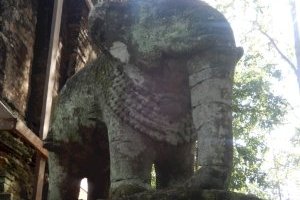
Koh Ker did not interest me at all in 2012 so I was more than fine to have skipped it when I went to Preah Vihear Temple, despite the former being on the way. Little did I know that I missed something. While as a complex it is not as spectacular as the ensemble in Angkor, the axial alignment of the Terrace of Lingams-Prasat Thom-Prasat Roum-Prasat Prang-Mound of the White Elephant King reminded me of the impressive configuration of Preah Vihear Temple. While there are joiner tours now offered taking visitors to Koh Ker and Beng Mealea, this only works if: 1. You are happy seeing the pyramid alone, and 2. you have an active Angkor Pass to let you in Beng Mealea. My friend and I opted renting a car for a full day in Koh Ker instead. In doing so, we were able to do the loop and explore most of the temples. Aside from Prasat Pram, I also like the laterite-built Prasat Neang Khmau, an interesting single monument surrounded by two enclosures, and the heavily ruined Prasat Chrap that demonstrates clear design flaws in its three towers possibly arising from hasty work (a theme that will recur in most temples here). Prasat Damrei is another charmer with its elephant and lion sculptures (photo), and it even has an antecedent square sandstone temple that once housed a lingam too.
The nomination dossier spent a great deal in explaining about alignments and how the temples were built according …
Keep reading 0 comments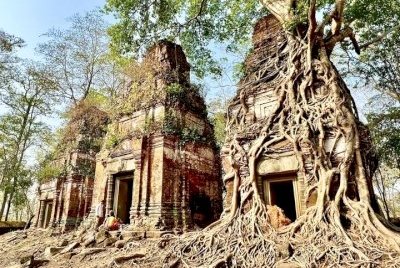
Originally not part of Dvaravati and Pre-Angkorian Arts trip arranged by ICOMOS I participated with. On the free day in Siem Reap, the separate excursion to Koh Ker had been arranged by a small group of experts which I promptly joined after I heard their special tour. We left Siem Reap very early and reached Koh Ker at 9 AM to be the first group of visitors of that day. The local guide and ICOMOS experts explained to me that Koh Ker was the capital of Angkorian Empire for only about 25 years during the reign of King Jayavarman IV and his son. The reason why the king moved the capital to Koh Ker is still unknown, but most historians believe that it was political reason since the King usurped the throne of his nephew, so he moved the capital to Koh Ker where he ruled as local lord before he attacked his rival in Angkor.
The first thing I noted that Koh Ker’s location was quite dry and hot than Siem Reap area, one expert told me that the shortage of water maybe another reason why people moved the capital back to Angkor later. After we secured the ticket, the first temple was Prasat Pram Group, a complex of five buildings dedicated to Shiva, here our experts explained that the Koh Ker’s architectural style was clearly developed from Rolous Complex outside Siem Reap but the ratio of the whole structure had been expanded especially around the gate …
Keep reading 0 comments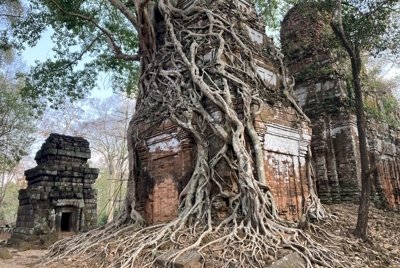
If Koh Ker gets inscribed later this year, it will be the 8th site related to the Khmer Empire and its predecessors on the World Heritage List. Considering the Maya have 9 now (and Takalik Abaj is upcoming!), it doesn’t seem overrepresented. But we are getting to the Tier 3 sites now I think, with Angkor solely occupying Tier 1 of the Khmer sites and the current WHS Sambor Prei Kuk and Preah Vihear holding Tier 2.
Koh Ker is a step down from these 3, considering both the visitor experience and the level of artistic/historic distinction. It dates from a relatively short period in the 10th century when it was the capital of the Khmer Empire. It was another stepping stone (both in time and location) between Sambor Prei Kuk and Angkor. The Khmer’s water management skills were further developed here.
The ‘best’ things the people from Koh Ker produced were colossal-sized statues. Unfortunately, none are left at the current archaeological site and there are no replicas either to show where they would have fitted. The statues can be seen in the National Museum in Phnom Penh and the Musée Guimet in Paris. In Phnom Penh, a giant Garuda from Koh Ker is welcoming all visitors at the museum entrance. Although the finer nuances in Khmer art elude me, I found the ones from Koh Ker easy to distinguish as they are of a large size, made of sandstone, and less refined.
The archaeological site is …
Keep reading 0 comments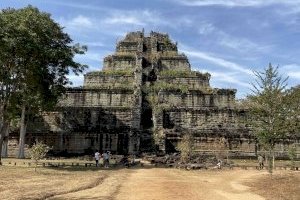
Koh Ker was our next stop on the day trip to Preah Vihear, after we visited Beng Mealea. Our driver told us this layered pyramid was actually his favourite temple of Cambodia. The multi-day Angkor passes used to cover this site two, however it changed recently and we had to buy separate tickets. Not a problem, it was worth it. On the day of our visit, the site was mostly visited by local tourists - it's obviously a bit off the main fare. There's actually two-in-one ensembles: firstly, you enter through a set of ruins that looks something like three structures of Sambor Prei Kuk thrown together, similarily encircled by tree roots, a bit of a lake and general state of ruin-disrepair. You're already impressed, there are some nice photo ops. And then you walk some more and in the view in front of you a large pyramid appears.
It's square in layout, with layered stories one on top of each other and the best thing is the rickety wooden staircase you can take to the top and enjoy the view. It's couple of hundred steps, wear a hat and have some water, you will need it. But the view were absolutely amazing and the whole detour was definitely worth it! As Nan pointed out, the pyramid provides the most distinctive and unique feature of the whole ensemble.
Keep reading 0 comments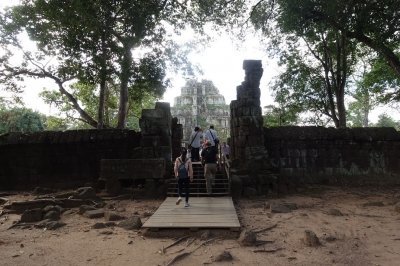
Normally I try to stipulate the full itinerary of a day trip with a driver before I go. This time I didn’t and my driver notified me in Preah Vihear that Koh Ker wasn’t part of the trip. I was left somewhat annoyed, but couldn’t really complain as all I asked for was Preah Vihear. Koh Ker was just mentioned as an alternative when my driver was pitching me potential day trips back in Siem Reap.
Coming down the mountain after my visit of Preah Vihear I had already prepared myself for major haggling. But this being Cambodia my driver asked for less than 20 USD as a starting bid. It was kind of cute and I just had to smile and said yes. Going to Koh Ker is at least a 1h detour and adds some kilometers to the tab.
And I have to say the money was well invested. Koh Ker managed to surprise me as I suddenly felt beamed to Yucatan: a pyramid in the jungle! Thanks to the limited visitors you are even allowed to climb it and get a great view of the surrounding landscape (mostly jungle). It’s funny how these classical forms transcend cultures. Admittedly, due to the rather late hour and the tiring heat, I skipped on the other components of the site.
OUV
I had already seen plenty of Khmer architecture when I came to Koh Ker. The site pales in size and artwork compared to Preah Vihear, …
Keep reading 0 comments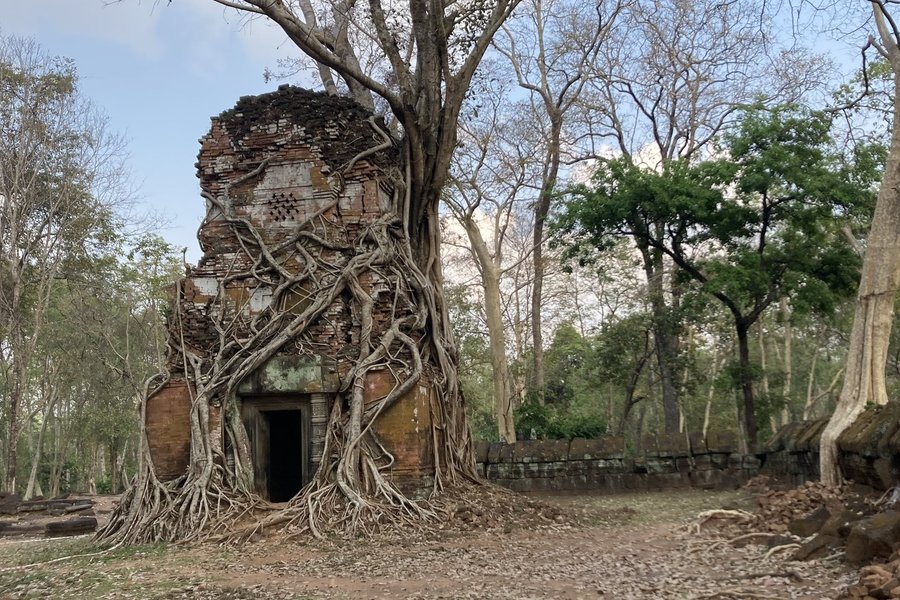
I went on a day trip from Siem Reap to 3 remote temples on one day with private car. One of those temples was Koh Ker. The site has several small and bigger stops. From the ticket booth you drive a few kilometres to the main site (with the piramide). First you enter a complex of temples and other buildings, at the end is the piramide you can climb.
After this main site you make a looping to see some small temples with lingas. On the way out many more smaller items, But also a beautifull location with 5 similar temples, two "eaten" by the trees.
Keep reading 0 comments
I was in Koh Ker in February 2010. The main monuments "Prang" (a huge pyramide)and the annex-temple "Prasat Thom" are really impressive. There are much more temples, some of them with two meter high lingas.(More informations: Koh Ker Wiki Voyage)
Keep reading 0 comments
